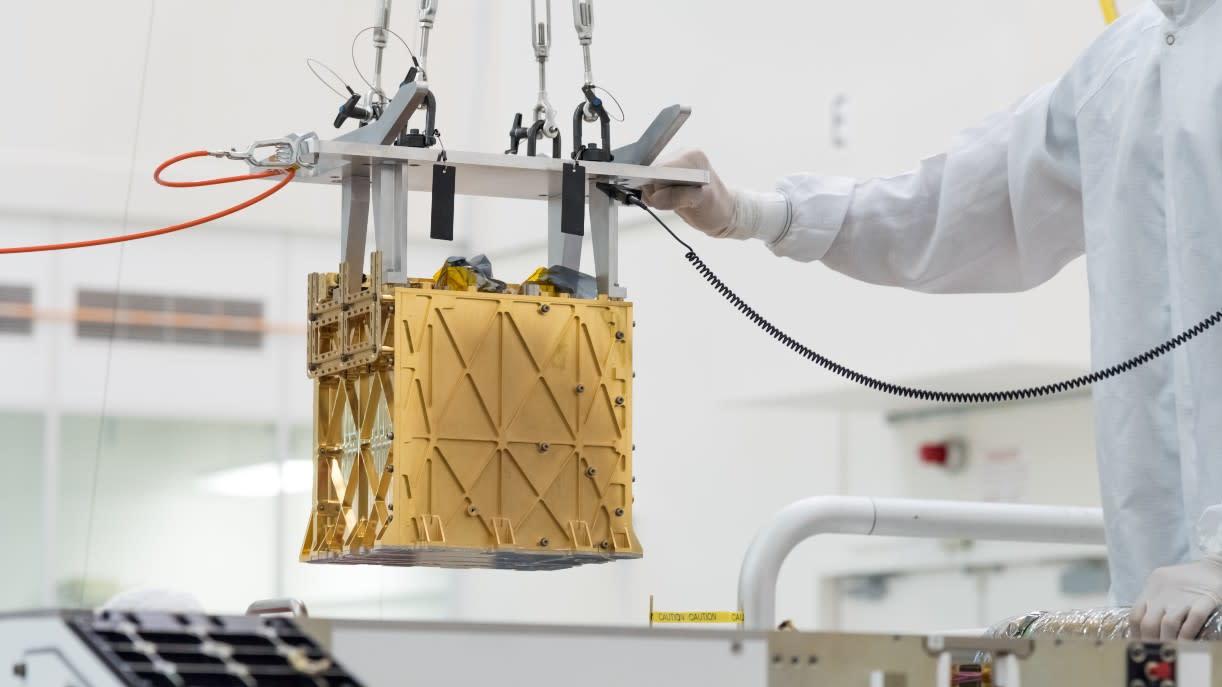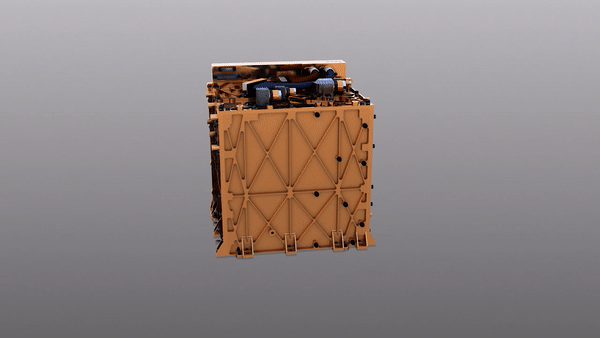NASA’s Ingenuity helicopter has captured much of the world’s attention, but an amazing new experiment, in which the Perseverance rover produced a tiny amount of oxygen, is equally deserving of praise.
On April 20, the MOXIE device on Perseverance produced roughly 5 grams of oxygen. That’s a tiny step for NASA and its rover, but a potentially huge leap for humanity and our aspirations on Mars. This small amount of oxygen — extracted from the carbon dioxide-rich Martian atmosphere — is only enough to sustain an astronaut for about five minutes, but it’s the principle of the experiment that matters. This technology demonstration shows that it’s possible to produce oxygen on Mars, a necessary requirement for sustainably working on and departing the Red Planet.
So while Ingenuity is the first human-built device to achieve powered flight on an alien world, MOXIE, or Mars Oxygen In-Situ Resource Utilization Experiment, is the first human-built device to generate oxygen on another world. Both experiments are big deals, as both tests are bringing Mars closer to our reach.

Indeed, the success of this test means it might actually be possible to produce breathable oxygen directly on Mars, and just as importantly, it also means astronauts might also be able to produce rocket propellant for the journey home.
Sure, we could organise cargo missions, in which giant tanks of oxygen are transported to Mars in advance, but the associated costs and time to achieve this would be enormous. A crew of four would require about one metric ton of oxygen to sustain them on Mars for a full year, but the story is strikingly different when considering how much oxygen is needed to power rockets for launch.
“Someday we hope to send people to Mars, but they will have to take an awful lot of stuff with them,” Michael Hecht, the principal investigator of the MOXIE project, explained in an email. “The single biggest thing will be a huge tank of oxygen, about 25 tonnes of it.”
Yikes — that converts to approximately 24,993 kg, or 25,000 kg.
Some of this oxygen will be for the astronauts to breathe, but the “bulk of it” will be used for the rocket “to take the crew off the planet and start them on their journey home again,” Hecht said.
Hence the importance of the MOXIE experiment. Should we be capable of making that oxygen on Mars, it would “save a lot of money, time, and complexity,” said Hecht, but it’s a “challenging new technology that we can only really test properly if we actually do it on Mars,” and that’s “what MOXIE is for, even though it’s a very small scale model.”

The words “Mars” and “oxygen” don’t often appear together, as the Martian atmosphere consists of 96% carbon dioxide. MOXIE works by separating oxygen from carbon dioxide, leaving carbon monoxide as the waste product.
“MOXIE uses electrical energy to take carbon dioxide molecules, CO2, and separate them into two other types of molecule, carbon monoxide (CO) and oxygen (O2),” Hecht explained. “It uses a technology called electrolysis that is very similar to a fuel cell, except that a fuel cell goes the other way — it starts with fuel and oxygen and combines them to get electrical energy out.”
To perform the experiment, MOXIE had to work like an oven, reaching temperatures as high as 1,470 degrees Fahrenheit (800 degrees Celsius). The toaster-sized machine was designed to tolerate this heat, featuring 3D-printed nickel alloy components to heat and cool the gases flowing through the device, along with an aerogel to trap the heat inside. MOXIE’s gold-plated shell protected Perseverance rover from the heat during the inaugural test. The device takes about two hours to warm up, but once it’s running, MOXIE should be able to generate up to 10 grams of oxygen per hour.
Whether the device would work properly on Mars was an open question until the test was actually performed. A poor result would have appeared as a “significant degradation of performance compared to how it worked in the lab two years ago, before we bolted it into the rover to start the sequence of events that took us here today,” said Hecht. But the first run was “absolutely perfect,” he said — a promising result that suggests “we can develop and test a much larger version on Earth and expect it to work just as well on Mars.”
When asked what surprised him most about the first test, Hecht said it was the identical performance compared to tests done on Earth.
“At home, if I were to just put something in a closet for two years and take it out again, I would be surprised if it worked perfectly,” he said. “For MOXIE, we’ve subjected it to all kinds of torture, running it through heating cycles, blasting it off from Earth, leaving it in the vacuum of space, plunging through an atmosphere, exploding all sorts of deployment devices around it, and finally running it in harsh conditions on another planet — and it was completely unfazed by all this!”
The initial test of MOXIE was primarily done to make sure the device survived its trip to Mars. The team is planning to extract oxygen on at least nine more occasions, which they’ll do over the course of the next Martian year, which is nearly two years on Earth. The tests will be done in phases — the first to assess MOXIE’s functionality, followed by experiments done in varying atmospheric conditions (e.g. day versus night), and the final phase to explore different modes of operation, such as running the experiments at multiple temperatures.
The Perseverance rover landed in Jezero Crater on February 18, which was just 62 days ago. The early returns have been encouraging, with Ingenuity and now MOXIE succeeding in their respective missions, and with more tests still to go. The Mars 2020 mission is already an undeniable success, regardless of what happens next.
